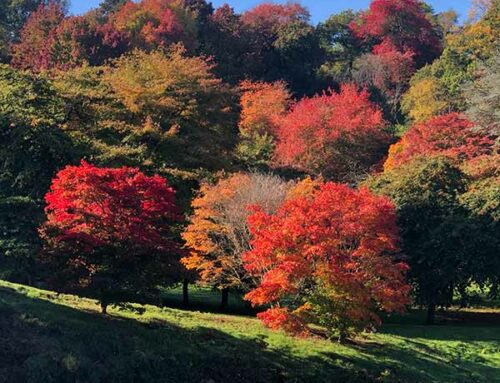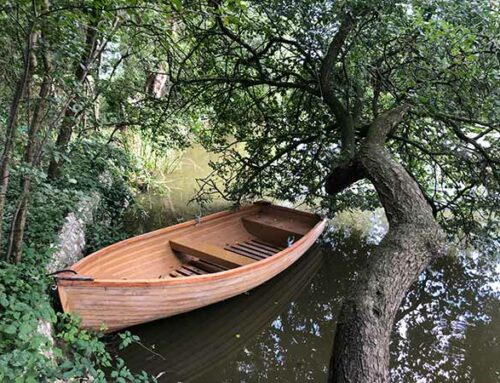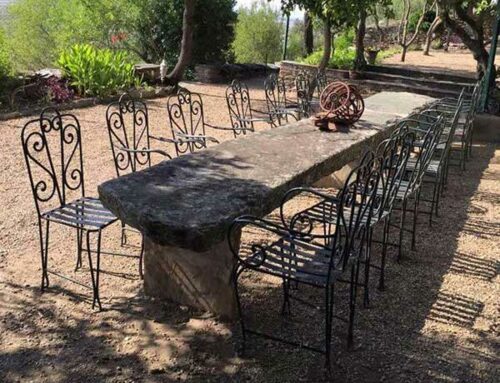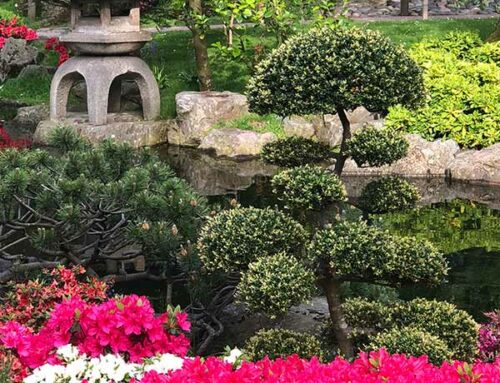The city of New York is famous for many things: the Empire State Building, the Statue of Liberty, Central Park and Broadway. But a lesser known jewel of this great city is one of the most beautiful and renowned botanical gardens in the world.
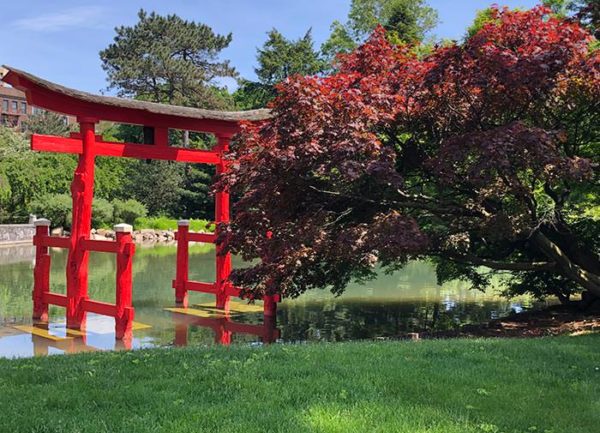
The Japanese Garden in Brooklyn Botanical Gardens, New York City
The Brooklyn Botanical Gardens (BBG) were founded in 1910 with the opening of a native flora garden, exhibiting species found within 100 miles of New York. Since then it has grown to house over 18,000 species of plant among its 15 gardens, 6 conservatories and numerous other planted areas with varying themes such as Japanese, desert, and English cottage gardens.
The garden is famous for its huge collection of Japanese cherry trees. There are over 200 blossoming cherries of 42 different species across the gardens. The first trees were a gift from the Japanese government just after WW1. They had previously gifted cherries to Washington DC, and American interest in Japanese cherries had been gathering for the previous decade – growers had started importing Japanese cherries for sale in 1906.
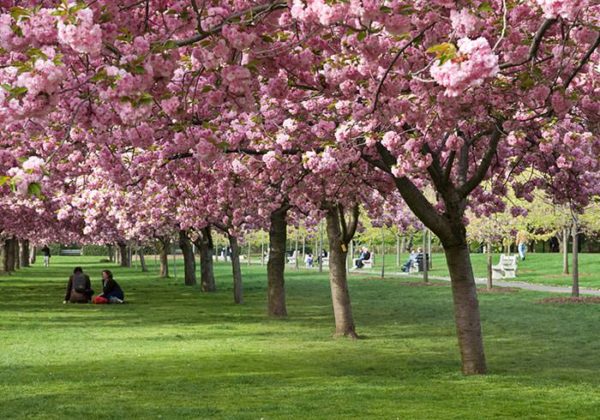
The famous Cherry Blossom walk in full bloom in Spring, Brooklyn Botanical Gardens
The park holds Hanami, a month long festival of cherry blossom, culminating in Sakura Matsuri, a weekend festival of Japanese culture, held when the cherries are at peak blossom in mid-late spring. This takes place on the Garden’s cherry esplanade, which is lined with 93 Prunus Kanzan that cover the skyline with their bright pink blossom. Unlike much of the rest of the garden, visitors are encouraged to stroll and sit on the grass to enjoy the fantastic blooms. Their website even has a map, updated daily, showing how far along in bloom every cherry tree is!
Arguably the centrepiece of the BBG is the Hill-and-Pond garden – a Japanese garden designed in 1915 by Takeo Shiota and the first Japanese garden in the Americas. It embodies Shiota’s belief that “a garden, like a landscape painting, should express the essence of nature in a limited space”. In true Japanese style, the garden is packed with symbolism. Three hills represent earth, heaven, and humanity, and the central pond is in the shape of the character shin, meaning heart/mind. The whole garden is centred around a majestic torii, a gate-like structure of the Japanese religion Shinto, representing the transition from the everyday to the sacred.
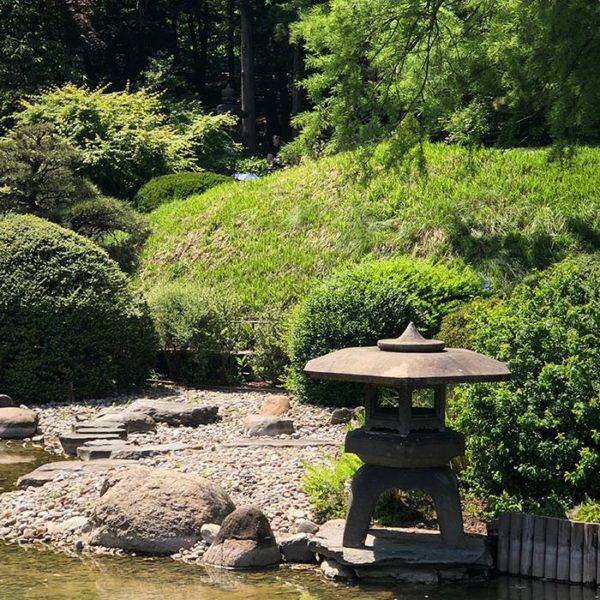
The Japanese Hill and Pond garden, featuring the Torii, symbol of Shinto
This feeling of reverence carries itself around the garden. Winding paths reveal landscapes as corners are turned. Huge, weeping cherry trees droop over the pond; the tips of their branches tickling the still, koi-filled waters, while astounding cloud-pruned niwaki adorn the banks. Interestingly, these stunning cloud trees do not take centre stage. Rather, they subtly decorate the wider landscape, and in true Japanese style, blend harmoniously with the undulating greenery.
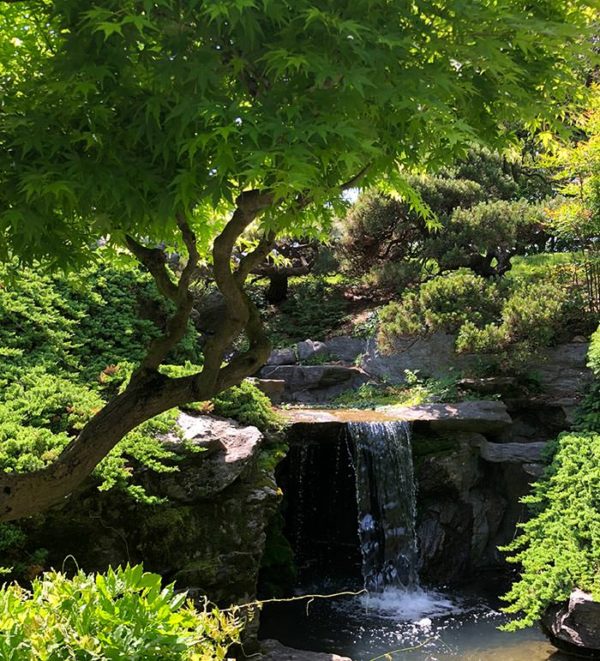
Japanese water garden water falls into Koi filled ponds
Low dome topiary features around the pond, and mature rhododendrons, azaleas, and camellias bring yet more flowering colour, rising up from low ornamental grasses that cover the ground by the paths. Gnarled old cherries rise up from beds of waist-high dwarf bamboo. And of course, the garden is home to many species of Japanese maple, which provide dazzling colour from spring to autumn. 300 tree peonies illuminate the landscape, gifted to the gardens in 2002 from the town of Yatsuka-Cho to “to bring peace of mind to people in the United States”. Mahonia and Japanese ferns also compliment the design. The garden is surrounded by towering pine trees that shelter it from the roar of the rest of the city, creating the tranquil escape that is synonymous with Japanese gardening.
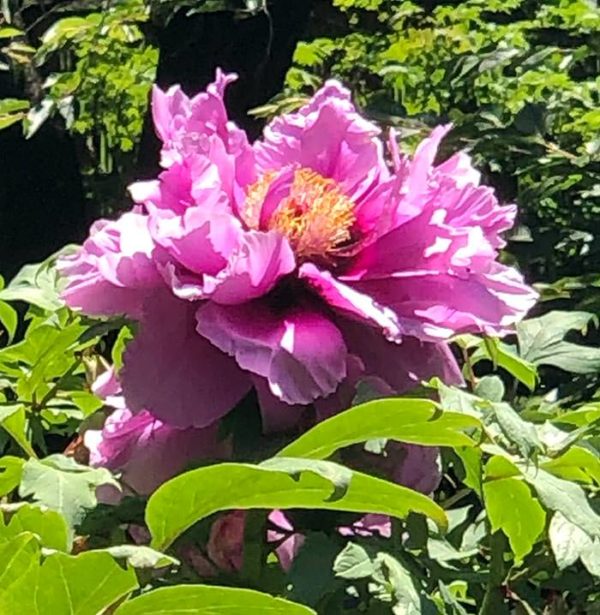
Tree Peony Collection at Brooklyn Botanical Gardens
Unbelievably, this exquisite example of Japanese gardening is not what the gardens are best known for. The gardens have a species named after them! Magnolia ‘Brooklynensis’ was first bred here – a cross between the acuminata (from the eastern US) and lilliflora (from China) varieties. Magnolia Plaza is a walkway within the gardens which showcases their huge magnolia collection, ranging from small bushes to 20m+. Plants of the Brooklynensis family are now sold the world over, including the well-known ‘Yellow Bird’ variety.

Flower of Magnolia Brooklynensis Yellow Bird bred at Brooklyn Botanical Gardens
The gardens are home to a bonsai museum which holds around 350 bonsai plants of many species, including pinus parviflora . According to BBG, some of these plants are well over a century old and a few are even in their original containers! The displays are changed seasonally – it’s hard to imagine a more beautiful to the ancient art of bonsai.
Among the other fascinating areas of the gardens are the Rose Garden and the Shakespeare garden. The Rose Garden contains 1,400 different roses (some surviving from their original planting in 1927) of every conceivable type. They bloom through spring and summer, covering the garden in sweet scents and lustrous colour.
The ‘Shakespeare garden’ features 80 plants mentioned in the works of the bard, all paired with a relevant quotation, scattered across an English cottage garden.
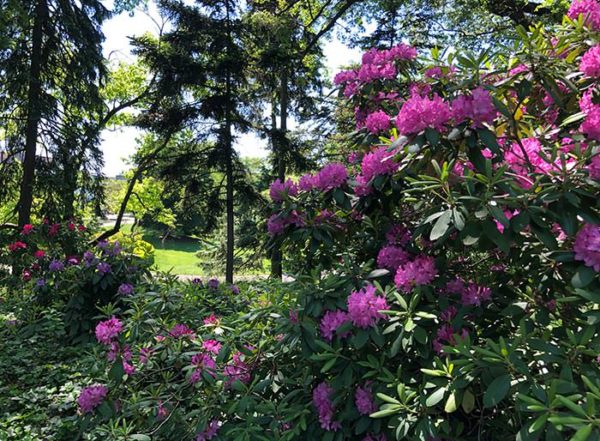
Mature Rhododendrons flowering in the Woodland Garden
The Fragrance Garden was designed in 1955, and was the first in the US to be designed for the visually impaired. It contains all manner of sweet scents and tactile textures. Visitors are encouraged to rub their hands along the leaves before making their way to the fountain, which as well as providing a calming soundscape, provides a place to wash hands after exploring the garden with touch.
The gardens also run many outreach programs: a children’s garden where 2-17yr olds can plant under the guidance of instructors, ecology lessons, a discovery garden geared towards learning, and an annual “greenest block in Brooklyn competition”, judged by their staff.
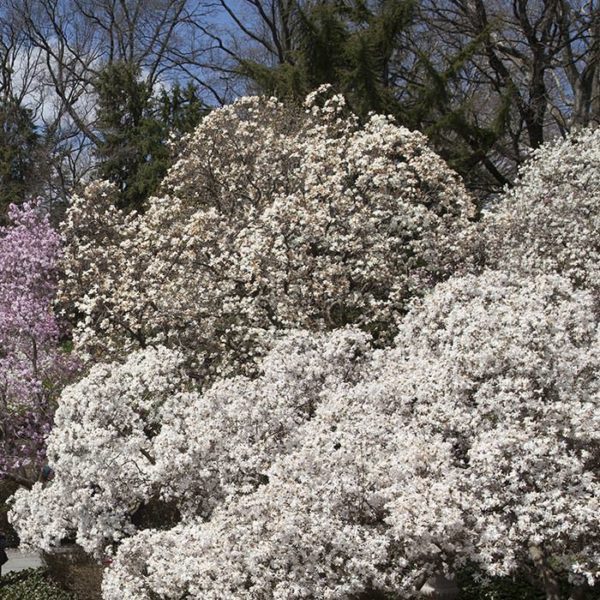
Magnolia trees blooming – one of the biggest collections of Magnolias in the US
The Brooklyn Botanical Gardens’ fantastic range of mature Japanese plants truly inspires us here at Paramount Plants. We are specialists in mature flowering cherries, Japanese maples, and cloud-pruned niwaki. If you’d like to recreate the tranquil ambiance of these gardens at home, contact our advisors on [email protected]. And if you ever find yourself in New York, maybe skip Times Square and instead transport yourself to a far-eastern paradise.

